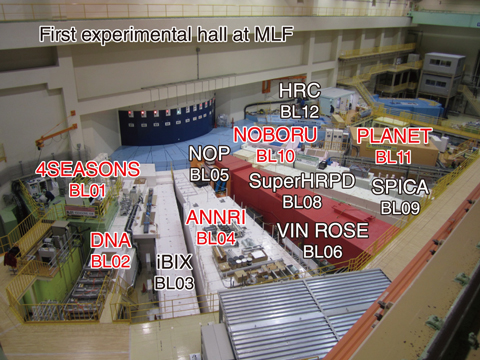
Fig.5-1 J-PARC’s first experimental hall at MLF
In accordance with the Science and Technology Basic Plan formulated by the Government of Japan, we have aimed to contribute to the advancement of science and technology and the promotion of industry in Japan through the production of innovative results using neutron and synchrotron radiation. This has included using the high-intensity proton accelerator at the Japan Proton Accelerator Research Complex (J-PARC) and the JAEA synchrotron radiation beamlines at the Super Photon ring-8 GeV (SPring-8), as well as upgrading neutron facilities and devices and pursuing world-leading research in fields such as nuclear energy and materials sciences that utilize neutron and synchrotron radiation.
(1) Research and development at J-PARC
J-PARC comprises a series of three proton accelerators, including a linear accelerator (linac), a 3-GeV rapid cycling synchrotron (RCS), and a 50-GeV synchrotron, and three experimental facilities. These facilities include the Materials and Life Science Experimental Facility (MLF) for a wide range of research fields using neutron and/or muon beams (Fig.5-1), the Hadron Experimental Facility for nuclear and particle physics experiments using K-mesons and other particles, and the Neutrino Experimental Facility for T2K particle physics experiments using neutrinos. These experimental facilities are open to users from across the globe.
Successive tests and component improvements have been conducted on the accelerators to realize stable operation with a 1-MW beam; as a result, a stable and continuous operation at 1 MW for 10.5 hours has been achieved. At the MLF, the user program for seven scheduled run cycles (153 days) was successfully accomplished with an availability of over 90%.
The first stage of a radio- frequency quadrupole linac (RFQ) was developed under an upgraded program. This RFQ is an unprecedented RFQ that incorporates an optimal beam-dynamics design for accelerating large-current beams, thus allowing for a more stable operation of the accelerator (Topic 5-1).
A new beam feedback system was introduced to the RCS to improve the quality of the extracted beam after acceleration and further reduce beam loss.
At MLF, 21 neutron spectrometers and 2 muon instruments were constructed, and a wide range of experiments related to materials and life science have been conducted. On the surface of the Earth, hydrogen atoms in minerals generally take an asymmetric position between two oxygen atoms. Using the neutron diffractometer “PLANET” (Beam Line No.11), the symmetrization of hydrogen bonding in a mineral in the deep Earth was found at the high pressure of 18.1 GPa, which corresponds to the pressure at approximately 520 km deep into the Earth’s mantle (Topic 5-2).
As the high-intensity proton beam injects to the neutron target, cavitation damage degrades the structural integrity of the mercury target vessel. By adopting double-walled structure and narrowing the channel for the mercury target vessel, the cavitation damage during high power operation of MLF was reduced drastically, thus confirming the cavitation reduction effect by decreasing the width of channel and increasing the flow velocity (Topic 5-3). This double-walled structure was adopted in the actual target vessel, and post irradiation examination data shows the designed structure can drastically reduce the cavitation damage.
(2) Research and development at the Materials Sciences Research Center (MSRC)
MSRC aims to create innovative results and seed research in a wide range of scientific, technological, and academic fields by developing and improving neutron and synchrotron radiation instruments for advanced structural and functional analysis in Tokai (JRR-3 and J-PARC) and in Harima (SPring-8).
In FY2019, a novel and precise texture measurement technique using the accelerator-driven compact neutron source was successfully developed in strong collaboration with the Institute of Physical and Chemical Research (RIKEN) (Topic 5-4). The developed technique is expected to contribute to the development of innovative materials and products at various manufacturing sites, as it does not require large neutron experimental facilities.
An identified structural change of protein was investigated using inelastic neutron scattering techniques and computer simulations (Topic 5-5). This change was used to clarify the mechanism of function of proteins. This achievement confirmed the importance of studying protein dynamics by the inelastic neutron scattering technique and showed that this technique is a powerful tool for investigating the function of proteins. This research was done in collaboration with University of Tokyo, Tokyo Institute of Technology, Japan Synchrotron Radiation Research Institute, Comprehensive Research Organization for Science and Society, and JAEA. Ionic liquids have recently been investigated as promising candidates as non-inflammable electrolyte in rechargeable batteries. Their practical use would allow for a rechargeable battery that is safer than current products. Here, the unknown structure of the electric double layer in the vicinity of the electrolyte–electrode interface was detected using neutron reflectivity measuements (Topic 5-6).
The mechanism behind the working memory of amorphous aluminum oxide, which is a candidate for next-generation nonvolatile memory to prevent deterioration by rewriting, was studied in cooperation with the National Institute for Materials Science and the National Institute of Advanced Industrial Science and Technology (Topic 5-7). These results contributed to the development of next-generation nonvolatile memory with low electricity consumption.
A new superconductor, UTe2, was discovered at the end of 2018. The first successful observation of the electronic state of UTe2 was achieved (Topic 5-8). Future work will aim to continue contributing to the universal understanding of various material properties, such as magnetism and electronic conductivity of uranium compounds.